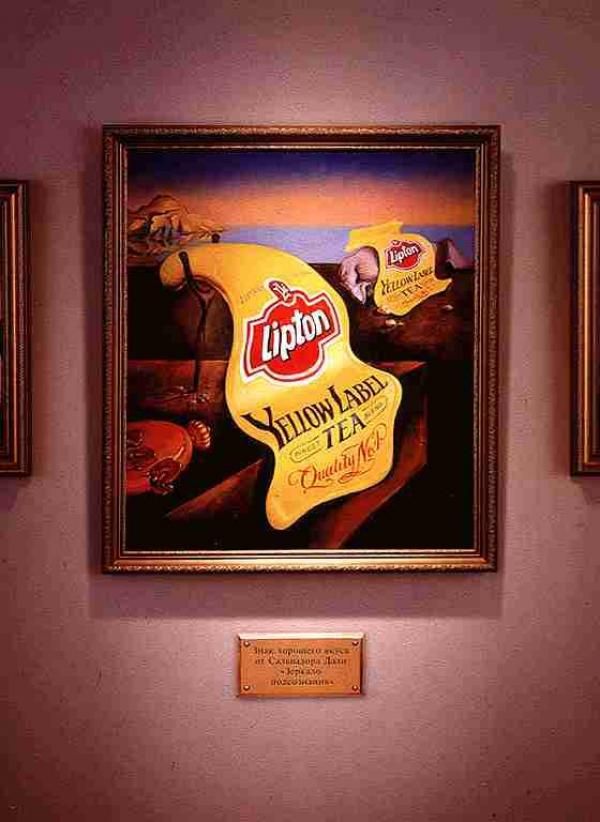Russian Burger King Campaign Isn’t the First to Mix Art and Advertising
There’s a lot of back-and-forth between these worlds
/https://tf-cmsv2-smithsonianmag-media.s3.amazonaws.com/filer/b9/ce/b9cedd78-5f15-40e4-a3c6-989974b68780/42-79052943.jpg)
Art and food advertising have always had a close relationship, whether it the classic commercial art of mid-20th century print ads or Andy Warhol’s subversive screen-printed soup cans. Over the years, plenty of artists have tweaked and twisted ad campaigns to comment on everything from commercialism to consumerism—but when ad campaigns start appropriating images from famous art pieces, things can get a bit strange. Just take Russian Burger King's recent campaign for political artist Pyotr Pavlensky.
Pavlensky may not be as well known in the United States as Warhol or da Vinci, but in Russia he is an infamous character. A brashly outspoken artist, Pavlensky has staged all sorts of extreme performances protesting the actions of Russian president Vladimir Putin. According to the Moscow Times, Burger King patrons in Putin’s hometown of St. Petersburg will soon be able to order burgers made “in honor” of some of the artist’s most well-known pieces, such as the time he sewed his lips shut to protest Kremlin policies, or when he nailed his own scrotum to the pavement in Moscow’s Red Square. The PR company representing Burger King in Russia says it is trying to “bring culture to the masses” – which in this case means burgers that are “wrapped in edible barbed wire,” sewn shut, or have an egg attached to the bun with a plastic spear.
Thing that's out there? Check out some other art stunts from the advertising world that have turned heads for sheer weirdness:
Cornflakes and “American Gothic”
Not everyone may know Grant Wood’s name, but say the words “American Gothic” and most people will probably know what artist you’re talking about. The dour-looking characters at the center of Wood’s 1930 painting of a pair of “Midwestern types” with their farmhouse, pitchfork and simple clothes has long been a classic image of rural American life. So, when it came to selling cereal in the 1960s, it made perfect sense that cereal company General Mills would dress a couple of actors as if they stepped out of the painting and have them sing a song about Corn Flakes. With a jarring mix of stone-faced actors, goofy animation and a kitschy song, it’s no wonder that the 1963 ad was a hit.
Leonardo da Vinci and Just About Everyone
Between the “Mona Lisa” and “The Last Supper,” Leonardo da Vinci’s iconic artworks have long been shorthand for classic art in advertising. The paintings are arguably two of the most recognizable pieces of art, and as advertisements and television commercials are meant to make an impression on their audience in a short period of time, it’s no wonder that companies from Pizza Hut to Doritos have used Leonardo’s works to hawk their products. By using these paintings as symbols, companies are able to evoke a strong image in their audience’s mind while poking fun at the pretentious reputation of the art world.
Lipton Tea and Salvador Dalí

Salvador Dalí’s most iconic painting is probably “The Persistence of Memory,” a surrealist scene populated with melting pocket watches strewn across dead trees and a desert landscape. Which, of course, makes it a perfect tool for selling tea. In this classic ad for Lipton Tea's Russian branch, the designers simply switched out the melting clocks for floppy tea bags. It’s a relatively minor tweak, but it gets the intended message across quickly and effectively by playing with the very strangeness of seeing the melting tea bags dangling all over the scene.
Of course, Dalí did actually star in some particularly memorable commercials of his own, so he might not have been too upset by the appropriation.
Ford and John MacNeill Whistler
John MacNeill Whistler’s iconic 1871 painting wasn’t originally titled “Whistler’s Mother,” but the nickname became so popular he later renamed it. Then, a little over 100 years later, Ford turned it into an ad for pickup trucks. This 1977 commercial plays with the appearance of a frail old woman in her rocking chair by turning her into an off-roading speed-demon behind the wheel of a new car. Considering how different 1970s cars were from most transportation Whistler’s mother probably had access to in her life, “far out” is probably a fair guess at what she would think at being behind the wheel.
Coca-Cola and Andy Warhol
If you’re going to steal, steal from the best. That seems to have been the impetus behind this 1985 Korean Coca-Cola commercial that superimposed some of his most famous celebrity silkscreens over the faces of people surrounding Andy Warhol in an appropriated image. But while da Vinci may have grimaced to see what future people did with his paintings, this was right up Warhol’s alley.
As Warhol wrote in his 1975 book, The Philosophy of Andy Warhol:
What’s great about this country is that America started the tradition where the richest consumers buy essentially the same things as the poorest. You can be watching TV and see Coca-Cola, and you know that the President drinks Coke, Liz Taylor drinks Coke, and just think, you can drink Coke, too. A Coke is a Coke and no amount of money can get you a better Coke than the one the bum on the corner is drinking. All the Cokes are the same and all the Cokes are good. Liz Taylor knows it, the President knows it, the bum knows it, and you know it.
Considering Warhol’s thoughts on advertising, art and Coca-Cola in particular, this commercial is actually one of the more faithful homages to its artistic inspiration.


